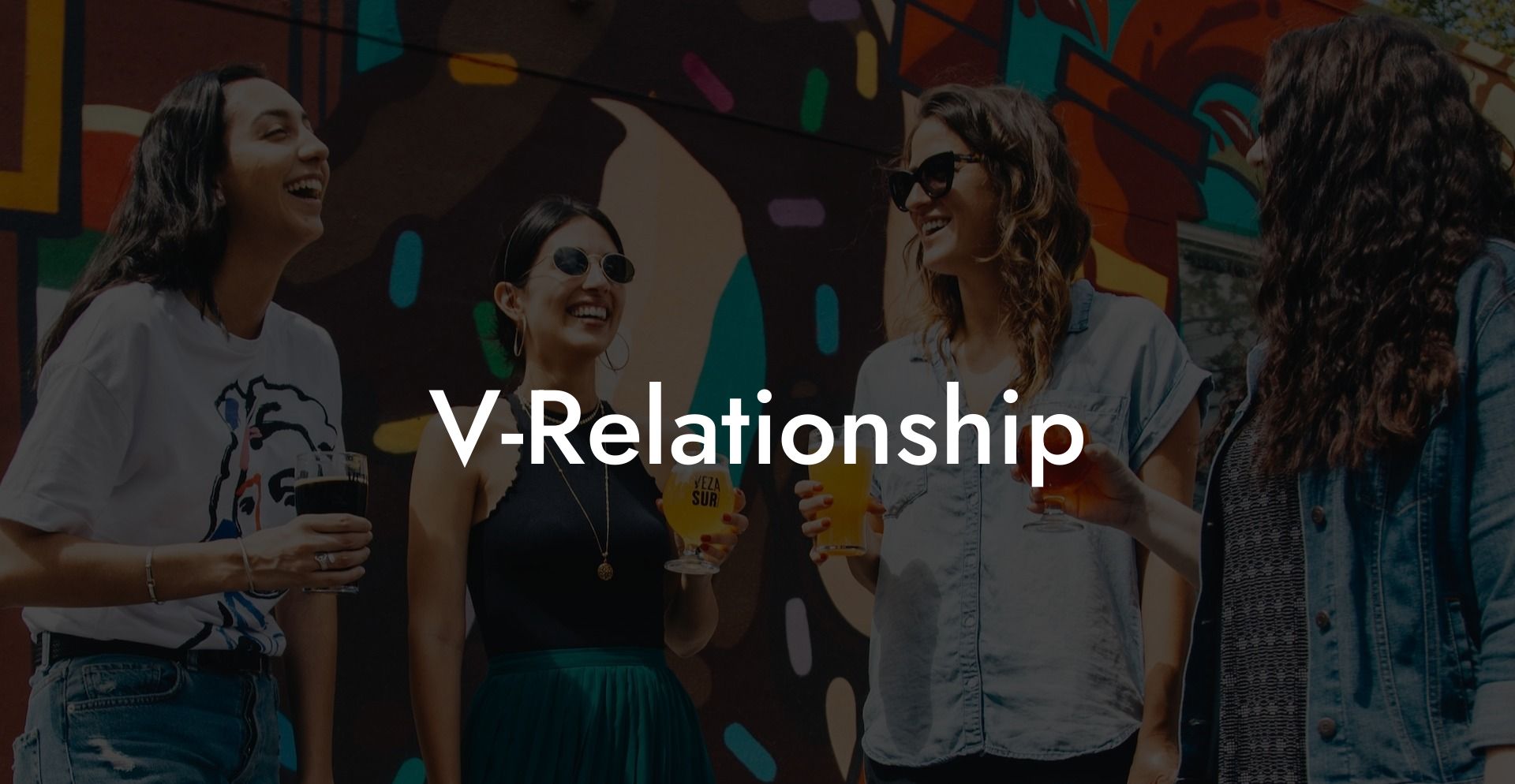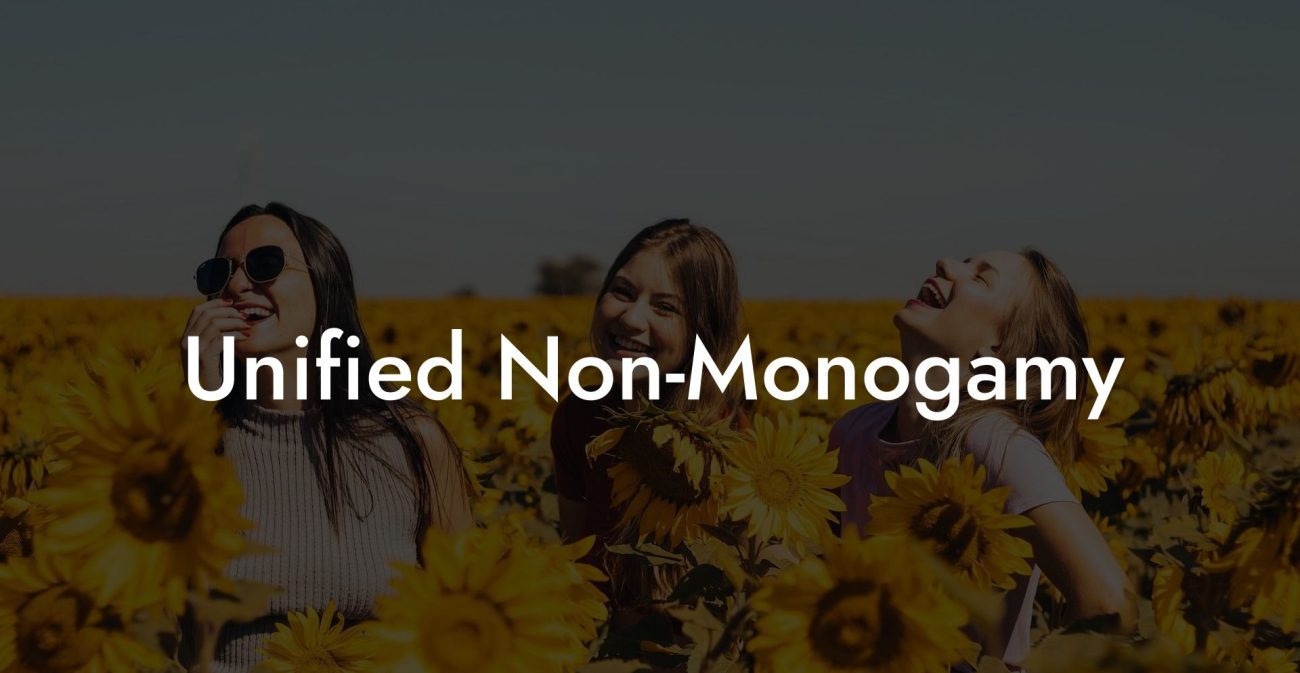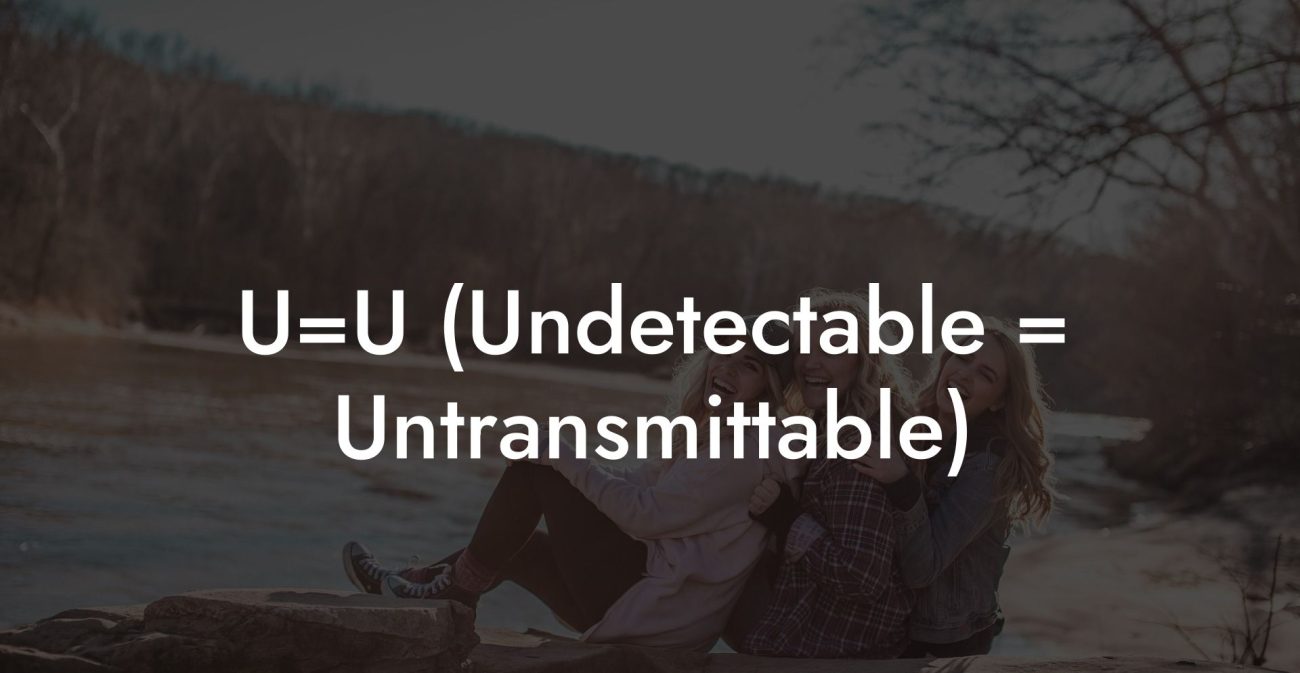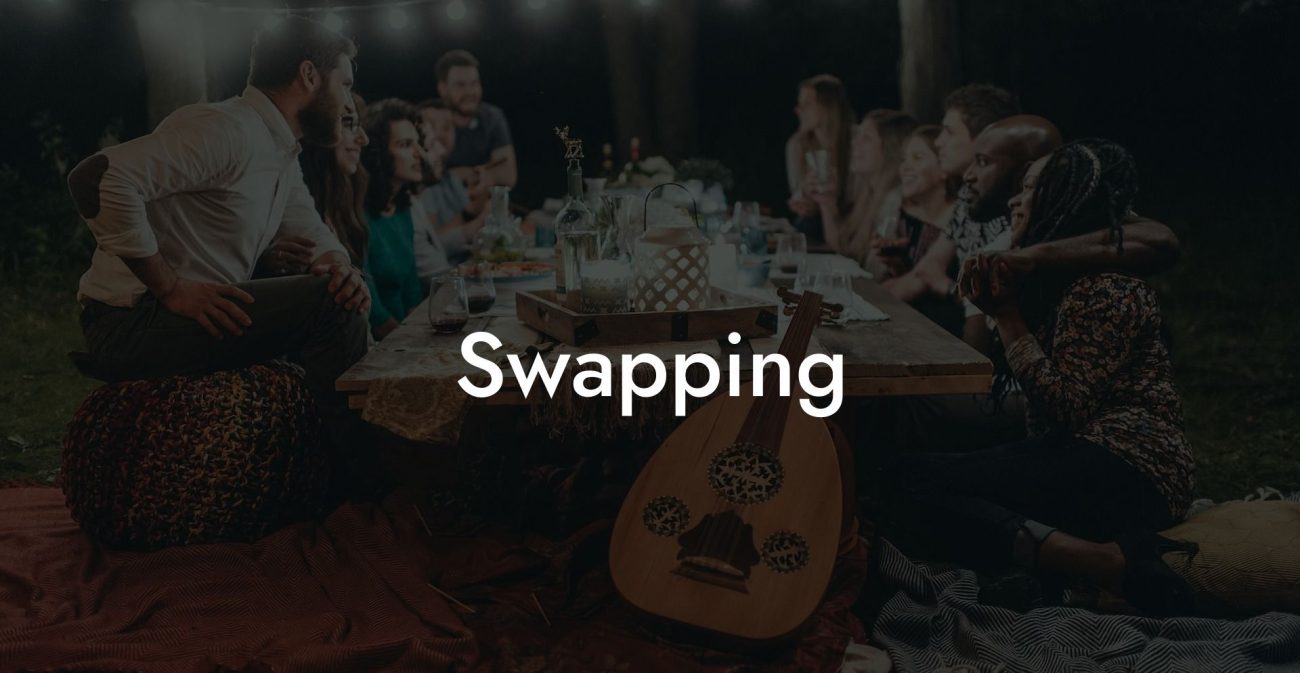V-Relationship

Imagine a relationship dynamic that forms a perfect “V” shape, one central person at the point, lovingly connected to two partners who, while not romantically or sexually involved with each other, share a unique and interdependent bond with the central figure. Welcome to V-Relationship, a compelling model within ethical non monogamy that challenges traditional relational hierarchies and embraces a structure where one person maintains intimate, balanced connections with two others. This model not only redefines how love and commitment can be organized but also offers a rich tapestry of shared experiences, open communication, and mutual empowerment.
Quick Links to Useful Sections
- The Ethical Non Monogamy Term: V-Relationship
- What Is a V-Relationship?
- Core Principles of V-Relationship
- A Quick Video Explanation
- Historical and Cultural Perspectives on V-Relationships
- Challenging Conventional Monogamy
- Cultural Shifts in Modern Relationship Models
- Everyday Dynamics of a V-Relationship
- Navigating Communication and Coordination
- Setting and Adjusting Boundaries
- Embracing Compersion and Mutual Growth
- Benefits of Embracing a V-Relationship
- Enhanced Emotional Diversity
- Greater Flexibility and Adaptability
- Increased Self-Awareness and Personal Empowerment
- Improved Communication and Conflict Resolution
- Challenges of V-Relationships
- Managing Complex Communication
- Balancing Emotional Needs
- Navigating Jealousy and Compersion
- Handling External Judgment
- Frequently Asked Questions (FAQ)
- Resources and Community Support: Your Next Steps
The Ethical Non Monogamy Term: V-Relationship
What Is a V-Relationship?
A V-Relationship is a specific structure in ethical non monogamy where one individual (the “pivot”) is involved with two separate partners who do not have a romantic or sexual relationship with each other. The term “V” refers to the visual layout of the relationship structure: the pivot at the point and the two partners forming the arms of the V. This arrangement can vary widely in terms of emotional closeness, sexual involvement, and day-to-day interaction, depending on the agreements and needs of everyone involved.
In a V-Relationship, the central figure typically manages the dynamics between both partnerships, ensuring that boundaries are respected and that open communication flows among all parties. While the two outer partners may have minimal or no direct interaction, their connection to the pivot can still influence the overall health and balance of the relationship. This structure provides a unique opportunity to explore personal autonomy, boundary negotiation, and the art of balancing multiple forms of intimacy.
Core Principles of V-Relationship
- Centralized Communication: The pivot plays a critical role in facilitating open, honest communication between all parties, ensuring that needs and expectations are clearly expressed.
- Clear Boundaries: Establishing and maintaining adaptive boundaries is essential for ensuring that each relationship operates healthily without encroaching on the other.
- Mutual Respect and Trust: All partners are encouraged to respect the autonomy and uniqueness of each relationship, fostering an environment where trust and compersion can flourish.
- Individual and Collective Empowerment: While the pivot coordinates the dynamic, each partner is empowered to pursue personal growth and express their needs independently, contributing to the overall resilience of the relationship.
- Flexible Structure: The V-Relationship model is inherently adaptable, allowing for changes in emotional intensity, involvement, or even the evolution of relationships over time.
- Inclusive Self-Expression: Every partner is invited to express their authentic self, ensuring that the relationships are not confined to traditional roles or expectations.
A Quick Video Explanation

Historical and Cultural Perspectives on V-Relationships
Challenging Conventional Monogamy
For many centuries, mainstream relationship models emphasized exclusive, dyadic bonds as the norm, often leaving little room for alternative structures. The emergence of ethical non monogamy in the latter part of the 20th century challenged these norms, inviting people to explore diverse ways of connecting. V-Relationships emerged as a natural extension of this exploration, a model that allows one person to maintain multiple, distinct relationships without forcing the partners into direct contact.
Early polyamorous communities experimented with various configurations, and many found that the V-structure offered a balanced approach for those who desired intimate connections with more than one partner, yet preferred not to mix those relationships. This structure helped shift the narrative from one of competition and jealousy to one of compartmentalization, balance, and shared growth.
Cultural Shifts in Modern Relationship Models
In today’s increasingly diverse and interconnected world, models like V-Relationships have gained traction among Millennials and Gen-Z, who value both independence and authentic connection. The digital age, with its vast online communities and progressive relationship discourse, has further normalized and celebrated non-traditional structures. Social media, relationship blogs, and podcasts have all contributed to a broader acceptance of V-Relationships as a viable, fulfilling way to organize one’s love life.
Modern narratives now emphasize that love can be fluid and multifaceted, one person’s capacity to connect does not diminish when expressed in multiple ways. V-Relationships exemplify this idea by providing a framework where diverse forms of intimacy can coexist harmoniously under a structure that is both flexible and supportive.
Everyday Dynamics of a V-Relationship
Navigating Communication and Coordination
In a V-Relationship, the central pivot must often navigate complex communication channels. Regular check-ins, both individually and with both partners together (if desired), are crucial for ensuring that everyone’s needs are met and that any issues are addressed promptly.
- Scheduled Check-Ins: Establish regular times to talk about your emotional state, discuss any shifts in boundaries, and share feedback on how the relationship dynamics are evolving.
- Open Dialogue: Encourage a culture of transparency where even if the outer partners do not interact frequently, they are kept informed about key changes that might affect the network.
- Conflict Resolution: Use proactive conversations to address potential conflicts before they escalate, ensuring that each partner feels heard and respected.
Setting and Adjusting Boundaries
Clear, adaptive boundaries are the cornerstone of a successful V-Relationship. Since the outer partners may have different levels of involvement with the pivot, it’s important to negotiate what is acceptable and what is not.
- Initial Agreements: Clearly define the roles and expectations at the start, including the level of contact (or lack thereof) between the outer partners.
- Ongoing Negotiation: As emotions and circumstances evolve, be prepared to revisit and adjust these boundaries. Flexibility helps maintain balance and prevents feelings of neglect or intrusion.
- Individual Needs: Recognize that each partner’s emotional needs are unique, and allow room for individual growth and change without disrupting the overall structure.
Embracing Compersion and Mutual Growth
A key benefit of the V-Relationship model is the potential for compersion, the joy that comes from seeing your partner happy with someone else. When approached with empathy and open-mindedness, this dynamic can lead to increased mutual trust and emotional resilience.
- Celebratory Moments: Share in each other’s successes and pleasures as a way to build a positive, supportive environment.
- Collaborative Growth: Use the unique perspectives of each partner to learn more about yourself and foster collective empowerment.
Benefits of Embracing a V-Relationship
Enhanced Emotional Diversity
A V-Relationship allows you to experience multiple forms of intimacy simultaneously. Each connection contributes a distinct layer to your emotional life, creating a richer, more varied tapestry of love.
- Layered Intimacy: Different relationships can satisfy different emotional needs, resulting in a more comprehensive and fulfilling love life.
- Broader Perspective: Engaging with diverse partners enriches your understanding of love and encourages personal growth.
Greater Flexibility and Adaptability
The V-Relationship model is inherently flexible, allowing for continuous adaptation as your personal and relational needs evolve. This adaptability makes it easier to navigate changes over time.
- Adaptive Boundaries: Regular renegotiation of boundaries ensures that the relationship remains healthy and supportive, regardless of shifting circumstances.
- Fluid Dynamics: The structure can evolve to meet new challenges or opportunities, making it a resilient model for long-term connection.
Increased Self-Awareness and Personal Empowerment
Navigating a V-Relationship requires introspection and honest self-reflection. This process can lead to a deeper understanding of your emotional needs, strengths, and areas for growth.
- Enhanced Self-Awareness: Regular reflection and communication help you identify what you truly need from your relationships.
- Empowerment Through Choice: The freedom to shape your relationships on your own terms fosters confidence and reinforces your autonomy.
Improved Communication and Conflict Resolution
Open dialogue is critical in a V-Relationship. By addressing issues proactively and engaging in constructive conflict resolution, you create an environment where all partners feel secure and valued.
- Proactive Dialogue: Consistent communication prevents misunderstandings and helps resolve conflicts before they escalate.
- Empathetic Engagement: Fostering an atmosphere of mutual respect and understanding strengthens trust and reinforces the overall relationship dynamic.
Challenges of V-Relationships
Managing Complex Communication
With multiple channels of connection, communication in a V-Relationship can become complicated. Ensuring that all partners remain informed and that misunderstandings are minimized requires effort and dedication.
- Tip: Establish clear communication protocols and regular check-ins to keep everyone aligned.
- Tip: Use digital tools like group chats or shared calendars to streamline communication.
Balancing Emotional Needs
Each partner in a V-Relationship has unique emotional needs, and balancing these can be challenging. The pivot must be particularly mindful of ensuring that neither connection feels neglected.
- Tip: Prioritize one-on-one time with each partner and remain attentive to subtle shifts in emotional needs.
- Tip: Regularly reassess your relationship agreements to ensure that every partner feels valued and supported.
Navigating Jealousy and Compersion
Feelings of jealousy may arise, even in well-managed V-Relationships. However, when approached with openness, these emotions can transform into compersion, a shared joy in each partner’s happiness.
- Tip: Engage in honest discussions about your feelings, and be willing to explore the roots of jealousy.
- Tip: Foster an environment where compersion is celebrated, and where every partner’s joy reinforces mutual trust and connection.
Handling External Judgment
Despite growing acceptance of ethical non monogamy, traditional societal norms may still cast judgment on unconventional relationship structures. External criticism can sometimes cause self-doubt or strain within the relationship network.
- Tip: Build a supportive community of like-minded individuals who understand and celebrate your relationship model.
- Tip: Focus on the internal benefits and personal growth that your V-Relationship provides, rather than on external opinions.
Frequently Asked Questions (FAQ)
1. What is a V-Relationship in ethical non monogamy?
A V-Relationship is a dynamic structure where one central individual (the pivot) is involved with two separate partners who do not have a romantic or sexual relationship with each other. This configuration allows for multiple forms of intimacy to coexist while maintaining clear boundaries.
2. How do V-Relationships differ from other polyamorous models?
Unlike networks where all partners are interconnected, V-Relationships typically involve a central pivot with two distinct partners who may have limited or no direct contact. This structure focuses on the balance and communication managed by the pivot.
3. What are the core principles of a V-Relationship?
Core principles include centralized and open communication, clear and adaptive boundaries, mutual respect and empowerment, fluid dynamics, and the cultivation of compersion alongside empathy.
4. How can I successfully navigate communication in a V-Relationship?
Establish regular check-ins, use digital tools to keep everyone informed, and create a safe space for honest dialogue. Proactive communication is key to preventing misunderstandings.
5. What benefits does a V-Relationship offer?
Benefits include the opportunity to experience multiple forms of intimacy, enhanced personal growth through self-reflection, improved communication skills, and the ability to create a rich, diverse emotional network.
6. What challenges might arise in a V-Relationship?
Challenges can include managing complex communication, balancing the emotional needs of all partners, navigating jealousy, and handling external judgment.
7. How can the pivot ensure that both partners feel valued?
By dedicating individual time for each partner, maintaining open lines of communication, and regularly reassessing relationship dynamics and boundaries, the pivot can help ensure that every connection feels nurtured.
8. What role do adaptive boundaries play in a V-Relationship?
Adaptive boundaries allow the relationship to evolve as personal needs change. They ensure that all connections remain healthy, consensual, and aligned with the evolving emotional landscape of each partner.
9. How do metamour dynamics factor into V-Relationships?
In many V-Relationships, the outer partners (metamours) may have little direct interaction, but the overall health of the network depends on the pivot facilitating respectful, transparent communication among all parties.
10. How can jealousy be managed in a V-Relationship?
Open dialogue, proactive check-ins, and cultivating compersion are key strategies for managing jealousy. Addressing feelings honestly and empathetically can help transform potential conflicts into opportunities for deeper trust.
11. Can a V-Relationship evolve over time?
Yes, V-Relationships are inherently flexible and can evolve as the needs and dynamics of the partners change. Regular renegotiation of boundaries and ongoing communication are essential for adaptation.
12. Where can I find more resources on V-Relationships and ethical non monogamy?
Additional resources include books like The Ethical Slut by Dossie Easton & Janet Hardy, podcasts such as Multiamory, and online communities like r/polyamory that offer insights and guidance on various relationship structures.
Resources and Community Support: Your Next Steps
- The Ethical Slut by Dossie Easton & Janet Hardy – A foundational resource providing insights into ethical non monogamy and practical strategies for navigating V-Relationships.
- Podcasts: Listen to Multiamory and similar podcasts for expert advice, personal stories, and tips on managing multiple forms of intimacy.
- Online Communities: Join forums like r/polyamory to share experiences, ask questions, and connect with others who have successfully navigated V-Relationships.
- Workshops and Webinars: Attend events focused on relationship psychology and ethical non monogamy to deepen your understanding and expand your support network.
- Therapy and Counseling: Consider professional guidance if you need help managing complex emotions or resolving conflicts within your relationship network.
By engaging with these resources and implementing the practical strategies outlined in this guide, you can fully embrace the V-Relationship model as a transformative approach to connection. Celebrate the diversity of your intimate bonds, maintain open and honest dialogue, and let your relationships evolve into a resilient, dynamic network of authentic love.
Lost & confused by all of the terms, types and seemingly made up 3 letter acronyms?? We've got you. Check out our Ethnical Non-Monogamy Dictionary >>
Useful Interruption: Not sure which relationship vibe fits you best? Take our Relationship Test, it’ll give you the real insight into your natural relationship style. Then, dive into our binge-worthy guides (from the tried-and-true to the “wait, that’s a thing?”) and find the perfect relationship type for your life:
- Monogamy
- Open Relationships
- Ethical Non-Monogamy
- Solo Polyamory
- Non-Hierarchical Polyamory
- Hierarchical Polyamory
- Relationship Anarchy
- Swinging
Now back to the main article but yeah take the test...












